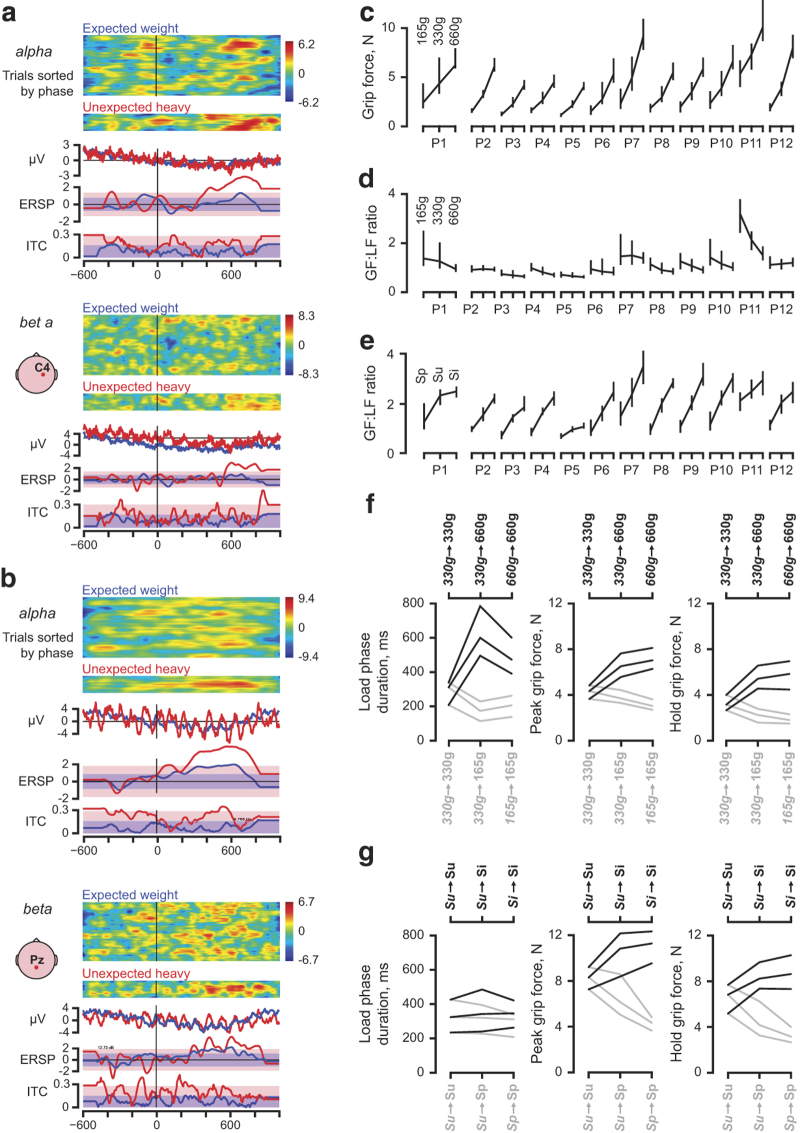Figure 3. Data validation.
(a,b) For channels C4 and Pz (shown in insets) recorded in Participant 3, trials when the object's weight was the same as in the previous trial (Expected weight, n=105; blue lines) and unexpectedly heavy (n=30; red lines) were contrasted using EEGLab11. The panels show from top, the power in the alpha and beta bands after sorting the trials by phase at the peak frequency, the average EEG amplitudes, the ERSPs and the ITCs. The colored patches represent 95% confidence intervals. The earliest moment this participant on average could have detected an increased object weight was ~200 ms after object contact (i.e., time zero). (c) All participants adapted their grip force to the object’s weight, i.e., 165, 330 or 660 g in series with sandpaper surfaces. The different weights thus invoked markedly different fingertip forces in all participants. (d) The grip:load force ratio was the same or declined across the three object weights in all participants, i.e., the force coordination was roughly the same irrespective of the object’s weight. (e) In series with the same object weight (330 g) but with contact plates covered with sandpaper, suede or silk, the grip:load force ratio increased with decreasing friction, i.e., in all participants the three contact plates offered different object-fingertip friction and all participants adapted to the prevailing friction. (f,g) When the weight (f) or the contact surfaces (g) was unexpectedly changed between trials, there was a marked change in the load force duration, in the peak grip force and the hold grip force (e.g., all increased when the object had an unexpected increased weight or decreased friction). Data aggregated across all participants. The lines represent the median and the 1st and 3rd quartile, black lines increased weight (f) and increased slipperiness (g) and gray lines decreased weight and slipperiness, respectively, as indicated on the top and bottom axes.

